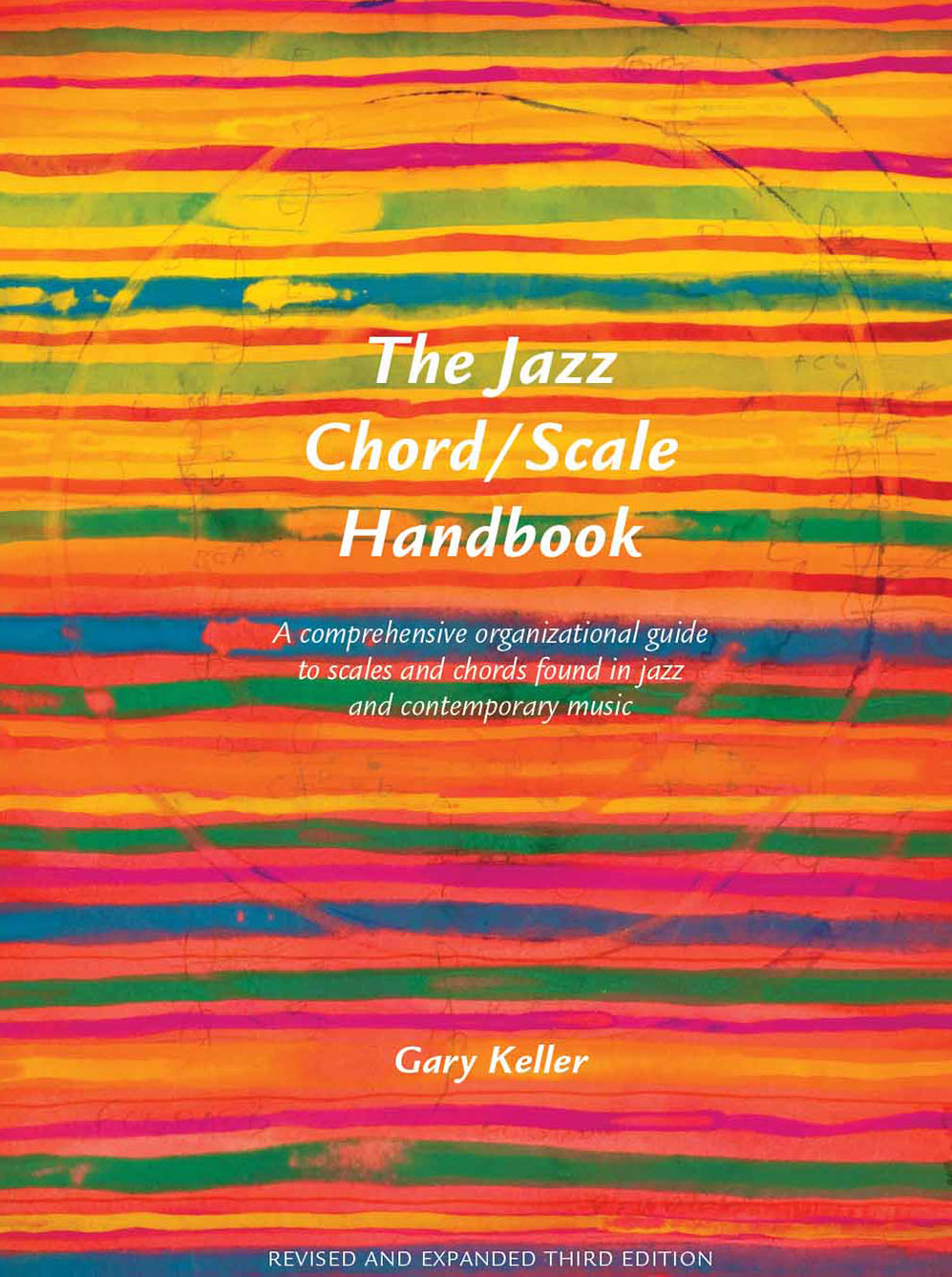| The Jazz Chord/Scale Handbook, new and expanded third edition |
|
gary@garykeller.net. Price is $25 plus shipping and can be paid through PayPal or Venmo. Please enter JCSH or “scale book” in the subject heading of your email. The Jazz Chord/Scale Handbook is a systematized guide to understanding virtually all the common (and many uncommon) scales and chord relationships used in jazz improvisation and composition. Based on the principle of harmonic systems, the handbook organizes the various modes of major, melodic and harmonic minor, harmonic major, as well as nine different symmetric scales, pentatonic scales, blues scales, and more. Most importantly, each scale is presented with the appropriate modal and functional chord voicings, information about common usage, and examples from the recorded literature. The new third edition includes more scales, more examples, and new information regrading chord and scale relationships. The 127 page book is in a compact, easy to carry size. It is a unique reference work and a great value! Some questions answered and topics covered:
|
 |
| Endorsements: “The Jazz Chord/Scale Handbook is packed with useful information on chord and scale theory. This book gives a comprehensive look at how scales generate harmony, and the voicings and examples put everything into a tangible perspective. An excellent primer to my texts on jazz composition.”Ron Miller, Professor Emeritus, University of Miami Frost School of Music. “Gary Keller’s book is a clean and clear reference on jazz harmony. From the simplest functional chords to the hipper modal colors, the book is organized to be useful to musicians at any level. I highly recommend it to all my students.” David Pope, Professor of Saxophone, James Madison University “I have turned to this quintessential book as a musical atlas of a harmonic language and compositional/improvisational approach that I have personally grown into and resonate with. It provides a clarity and a succinctness in a way only Gary can articulate; a field guide of modes, chord-scales, and voicings that spurs artists to self-discovery. Bravo!” Steve Pardo Creator, producer, and directer of music and audio for linear and interactive media in Nashville, TN “The Jazz Chord/Scale Handbook is a great resource for traditional and contemporary music. Gary covers just about every chord from the basic parent scales and symmetric scales. I use this book as a springboard to teach contemporary improvisation and composition.” Ed Tomassi, Professor, Berklee College of Music “The Chord/Scale Handbook is an excellent resource for the study of contemporary Jazz scales, chords and harmony. The book is well organized and covers a wide range of chords and scales along with useful voicings that are perfect for the aspiring student/player looking to expand their music vocabulary and deepening their understanding of music theory. I use this handbook on a regular basis as it continues to provide a wealth of information.” Mark Egan – bassist and composer, Elements “The Chord/Scale Handbook is an invaluable resource for both the beginner and advanced student of jazz improvisation. I have referenced this book countless times over the past 20 years for both classroom and personal study. It is a compact, precise, matter-of -fact guide demystifying jazz harmony in a practical and useful way without pretense. This is the definition of a go-to-book! Dr. Phillip Doyle, DMA. University of Miami Frost School of Music Your book is OUTSTANDING!! The thoroughly systematic presentation, including the light/dark graphics, represent the concepts so articulately!! Andy Weinzler, Professional saxophonis/jazz musician, Buffalo NY |